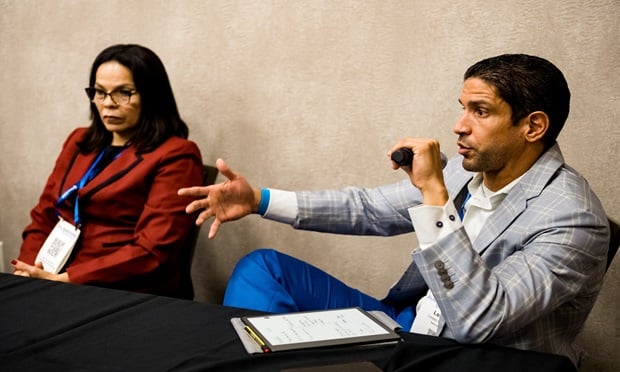As the American population keeps growing grayer, seniorfinancial fraud has become a hot-button issue for politicians andregulators.
|Three bills designed to protect seniors from financial fraud aremoving through the Senate Judiciary Committee with bi-partisansponsorship and support.
|Related: Help clients with their biggest age-65decisions
|A new model state law adopted by the North American SecuritiesAdministrators Association (NASAA) requires financial advisors andfirms to report suspected financial exploitation of seniorsto regulators and adult protective services offices.
|NASAA also has proposed model state legislation that would allowfinancial institutions to place a 10-day hold on disbursementswhenever firms or advisors believe harm may result to an investorage 60 or older. FINRA has requested comments on a proposed rulethat would do the same for accounts of people age 65 and older.
|Stronger legal protections are: 1) expanding and clarifying thedefinition of senior financial fraud; and 2) expanding the audienceof potential victims to include anyone above a certain age (e.g.,60 or 65). In the past, some statutes have focused only on fraudagainst mentally impaired seniors or those living ininstitutions.
|Claims of financial fraud often are made against family members,including those closely involved in senior caretaking. Consider thesesituations, and ask yourself whether they involve senior fraud:
A husband is caring for his 66-year-old wife, who is temporarilyincapacitated following a stroke. The husband wants to liquidatefunds from the wife’s checking account, in her sole name, to payfor care. He writes and dates the check and guides the pen in herhand as she signs. Several weeks later, their daughter files acharge against him, claiming forgery.
A son is caring for his 85-year-old father in an assisted-livingfacility. The father does not have access to a computer, but doeshave an online account at MySocialSecurity.com. The son goes to thesite, verifies the father’s identity, and logs on with the father’susername and password. The son then changes the bank account forreceiving the father’s Social Security benefits, so the son canaccess benefits to pay for the care facility. Weeks later, a familymember sees this change, asks the father if he authorized it, andfiles a claim of senior financial abuse against the son.
These are possible cases of senior financial abuse – even thoughthe caregiver has good intentions – and both situations could havebeen avoided with planning. Here's how:
||In the first case, the spouses could have set up a jointchecking account while both were healthy. In the second case, theson could have had his father execute a general power of attorneyin his favor, granting authority to make changes in Social Securityand other accounts.
|Joint accounts and powers of attorney can be useful tools forhelping to sustain care for seniors delivered by trusted familymembers. However, there also are potential problems in thesearrangements.
|For example, many banks will not allow a beneficiary orcontingent beneficiary to be named for a joint checkingaccount.
|Some financial institutions will not allow a person holding apower of attorney to be named an account beneficiary.
|You can help clients protect themselves against claims of seniorfinancial fraud by: 1) recommending joint accounts and generalpowers of attorney, when appropriate; and 2) helping clientsidentify financial institutions that can accommodate their planningwishes, especially in regard to primary and contingentbeneficiaries.
Complete your profile to continue reading and get FREE access to BenefitsPRO, part of your ALM digital membership.
Your access to unlimited BenefitsPRO content isn’t changing.
Once you are an ALM digital member, you’ll receive:
- Critical BenefitsPRO information including cutting edge post-reform success strategies, access to educational webcasts and videos, resources from industry leaders, and informative Newsletters.
- Exclusive discounts on ALM, BenefitsPRO magazine and BenefitsPRO.com events
- Access to other award-winning ALM websites including ThinkAdvisor.com and Law.com
Already have an account? Sign In
© 2024 ALM Global, LLC, All Rights Reserved. Request academic re-use from www.copyright.com. All other uses, submit a request to [email protected]. For more information visit Asset & Logo Licensing.








